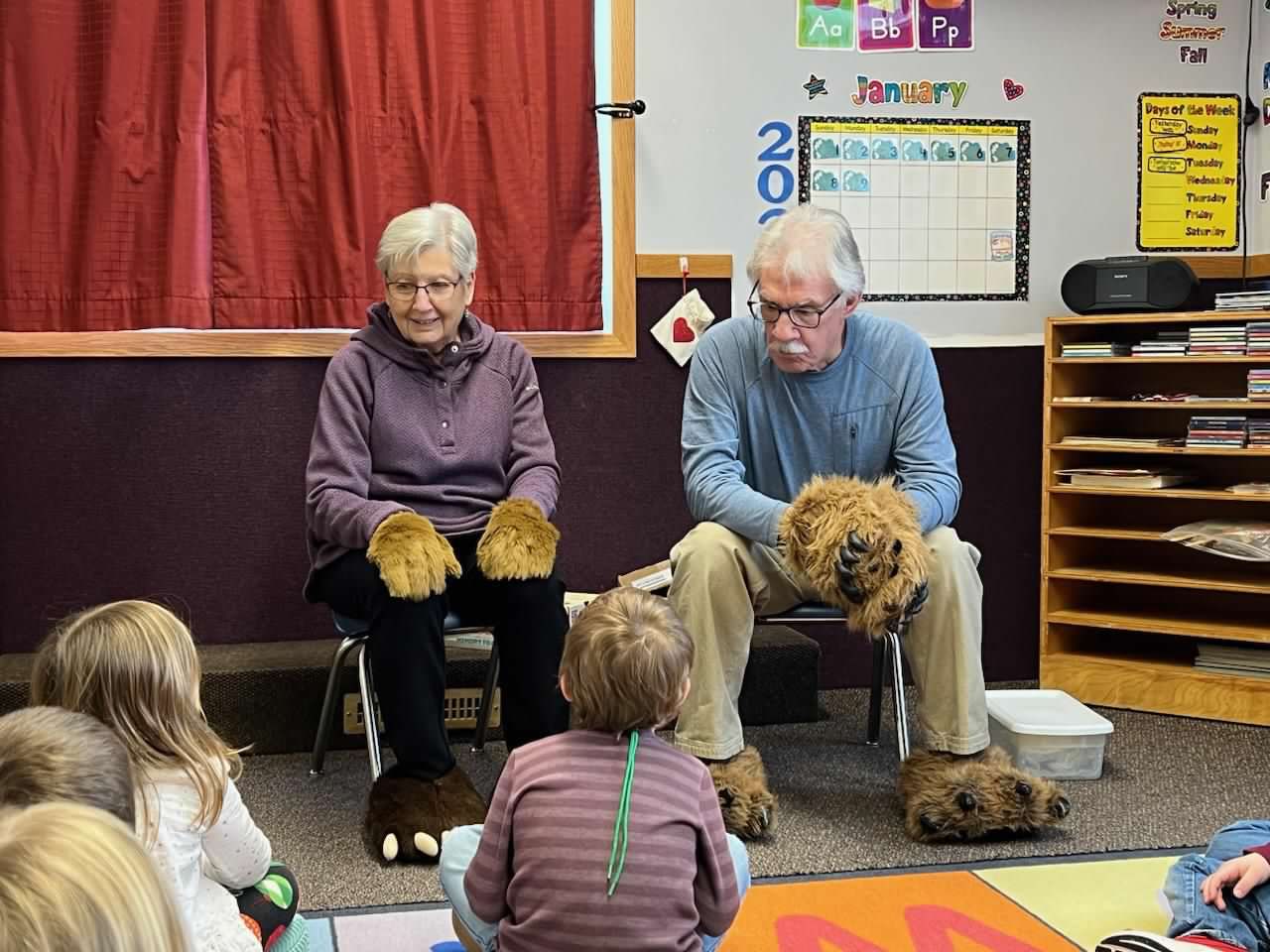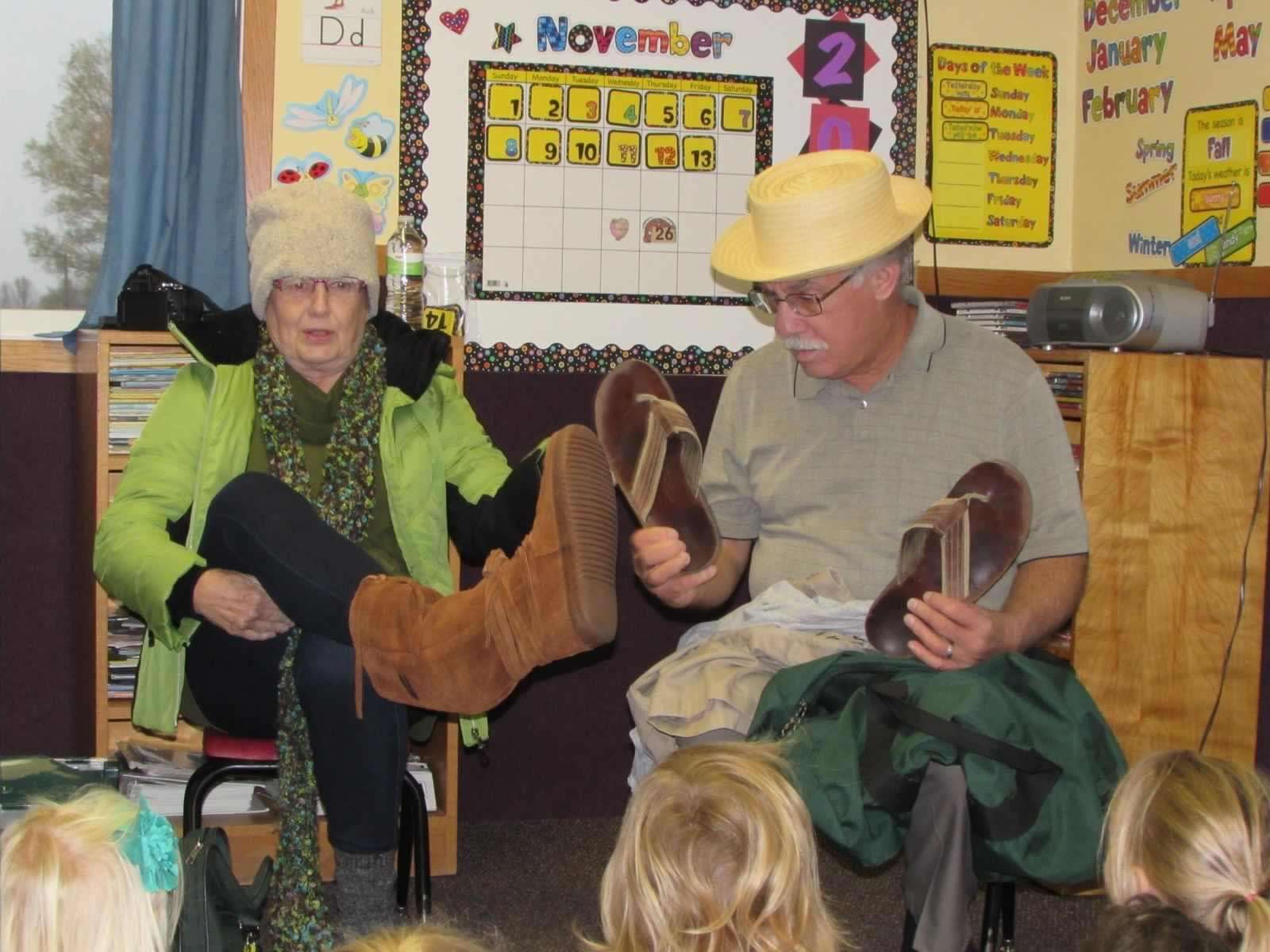Project Get Outdoors sparks love for nature
Outdoor programs teach children about nature through field trips and hands-on activities. Community partnerships make them possible.

Four- and 5-year-olds at Eyota Kids Korner, a child care center in Eyota, Minn., get to touch real animal furs, make plaster casts of animal tracks, and explore the playground in new ways.
Thanks to monthly sessions from September through May with volunteers Pam and Michael Pagelkopf, the children connect with nature. The Pagelkopfs also present the lessons to children at Listos Preschool and Childcare in Rochester.
As children spend more time in front of screens, organizations like Project Get Outdoors can provide them with many benefits. However, leaders need to help children overcome their fears, bridge language and cultural differences, and recruit enough volunteers.
The Pagelkopfs developed an offshoot of Project GO after they met Project GO founder Sara Holger in 2011. Holger sought volunteers to create programs for day care centers through the Minnesota Master Naturalists.
"We said yes because we just thought it was a nice way to introduce 5-year-olds, 4-year-olds to the outdoors, because we knew they wouldn't get it at home unless their parents were outdoor-type people," Michael Pagelkopf said.
The couple probably went overboard, Michael Pagelkopf said. They collected furs and skulls from different animals that children can touch; they have molds of animal tracks that children make plaster casts of; they have pairs of little binoculars and snowshoes they loan to the classrooms for children to use.

The lessons are free for the child care centers. The Pagelkopfs purchased most of the materials for their lessons themselves, and they volunteer their time, Michael Pagelkopf said.
The lessons are a hit at Eyota Kids Korner, said Cassie Stratton, executive director.
The Pagelkopfs make the outdoors magical for children, she said.
"They (the Pagelkopfs) make the outdoors real. They make it exciting. They make it concrete," Stratton said. "They (children) maybe read a book about the animal, and now they're touching the fur, and they're just that much closer. And it might even get them curious, and they might ask more questions."
More on Project GO
Background
Project Get Outdoors, or Project GO, teaches children about nature by getting them out in nature. They offer training sessions for staff of after-school programs, child care centers, K-12 schools, and more.
It began in 2005 as an after-school program in Plainview, Minn. Holger worked with the Plainview Migrant Council, Lakeside Foods, and local officials. They planned field trips to nearby state parks or just explored local parks.
Sign up for Project Optimist's newsletter
Solution-focused news, local art, community conversations
It's free. No spam. Unsubscribe anytime.
Word spread about Project GO, and communities invited Holger to help them create their own versions of Project GO. But turnover at institutions like local YMCAs or libraries meant that people who knew how to lead the sessions often left.
So Holger and her team changed the model. They still offer leader training for Project GO, but it's less intensive now. Leaders get a Project GO backpack full of tools, like binoculars, an insect net, a pop-up bug house, a ruler, and more. They also get a booklet with ideas for activities they can do.
Obstacles
Fear
Whether they are afraid of bugs, animals, traffic, or abduction, fear is the biggest reason why children don't spend time in nature, Holger said. Historical trauma can be linked to nature for certain groups of people, she said. Some people may also live in places where it's not safe to be outside because of the potential for crime or violence.
"Most commonly, it is these fears that keep people disconnected from nature," she said.
That's where Project GO leaders enter the picture. Their job is to teach youth how to be safe in the outdoors and find nature near their homes, Holger said.
Language, cultural differences
Project GO aims to work with underrepresented populations, Holger said, so she has made connections with community partners to help bridge language and cultural barriers.
When the program started in Plainview, Holger aimed to reach the migrant community. She said a key factor in recruitment was a partnership with the Plainview Migrant Council. Volunteers went door-to-door to explain the program to families alongside a translator from the council.
Holger learned how to prepare children for activities during the holy month of Ramadan by training Project GO leaders in the Muslim community.
"Sometimes Ramadan occurs in summer months, and so learning 'How do we prepare to be outdoors in the summer, when it's hot, when people are fasting?' and planning that into our outdoor adventures," Holger said.
Volunteers
The organization is driven by volunteer leaders.
In the case of the Pagelkopfs, Stratton said she wonders how the lessons at Eyota Kids Korner will continue when the pair decide they're no longer able to offer them.
Benefits
Holger hears from past Project GO participants here and there. Those who reached out told her the organization made a difference in their lives, she said.
Christian Fernandez, 23, participated in Project GO from third grade through sixth grade in St. Charles, Minn. He loved Project GO. He remembers one session where they made ice fishing poles out of pop cans and tested them on the Mississippi River. The group caught a lot of sunfish, he said.
 Project OptimistLisa McClintick
Project OptimistLisa McClintick
Since then, Fernandez graduated from Southern New Hampshire University and now works as a paraprofessional at Dover-Eyota High School. He is also the school’s varsity boys soccer coach.
“Project Get Outdoors was such a big help for me, and the outdoors has changed my life now as a person,” he said. “There's a lot of stress in today's world, and I think the outdoors is a very good escape route for me.”
The organization taught him how to access the outdoors and how to do so safely.
“I came from a Hispanic community growing up, and I feel like we didn't really have any people to guide us into the wilderness,” he said. “We came from a background where we didn't really have access to public land. We didn't know much about it. We didn't have anybody to really walk us through what you can and can't do in the outdoors, and I think Project Get Outdoors was such an awesome tool to help us out at the time.”
Evidence
Consistent exposure to the outdoors has been shown to make children healthier, happier, smarter, more successful in school, and better stewards of the environment, which Project Optimist reported on in more detail here.
Since its founding in 2005, Project GO has served more than 50,000 children, Holger said. The benefits described above are anecdotal evidence of the program's impact.
Lessons learned
Project GO started offering virtual training sessions during the COVID-19 pandemic, which Holger said are still available online.
The organization is also working to expand access to nature and forest therapy statewide. Project GO sponsored training for a cohort of 15 people to become certified nature and forest therapy guides in 2024.
 Project OptimistJen Zettel-Vandenhouten
Project OptimistJen Zettel-Vandenhouten
"We're trying to be adaptable, to look at what the trends are, what the needs are," Holger said. "And after COVID, mental health issues have just skyrocketed, and schools are struggling like the kids. I think every kid could use therapy. It's just — there's not the resources out there for it. So how can we help the teachers, the counselors, the school nurses, and the community health partners be that gateway to nature for mental well-being?"
Editor's note: Project Optimist Event Manager Alexa Shapiro was part of the forest bathing guide cohort sponsored by Project GO.
Learn more
Visit the Project Get Outdoors website for more information on how to become a volunteer or simply to learn more.
This story was edited and fact-checked by Nora Hertel.
